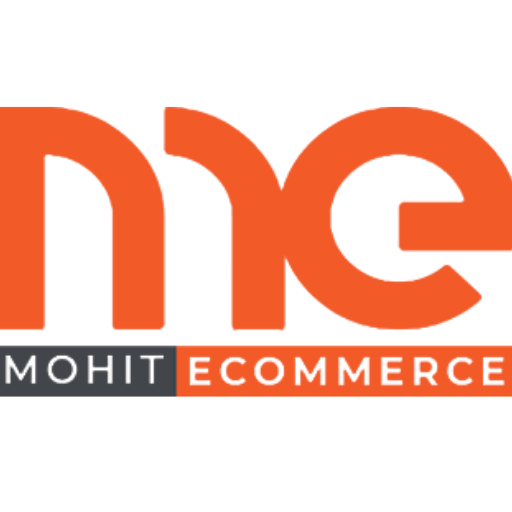Creating a successful Amazon seller strategy requires a nuanced approach that balances product quality, pricing, and visibility. It’s not just about listing items; it’s about understanding market trends and customer preferences.
You’ll need to define clear business goals and select the right products to maximize your potential. But what are the key components that can elevate your strategy? Let’s explore the critical elements that can drive your success on Amazon.
Key Takeaways
- Focus on product quality and competitive pricing to attract and retain customers effectively.
- Utilize Fulfillment by Amazon (FBA) for streamlined logistics and improved delivery times.
- Optimize product listings with relevant keywords to enhance visibility and searchability.
- Regularly analyze sales trends and competitor strategies to adapt your approach.
- Engage customers through targeted promotions and transparent communication to boost satisfaction and loyalty.
How to Create an Amazon Seller Strategy That Works Every Time?

How can you guarantee your Amazon seller strategy consistently drives results? Start by focusing on your products and ensuring they meet customer needs. Your pricing strategy must be competitive yet profitable, so analyze your competitors regularly.
Consider various fulfillment options, such as Fulfillment by Amazon (FBA), to enhance efficiency and customer satisfaction.
Your marketing efforts should target the right audience, utilizing tools like Amazon Advertising to increase visibility. Additionally, prioritize the customer experience; responsive service and accurate product listings can greatly impact reviews and repeat business.
Why Having a Clear Amazon Seller Strategy Is Crucial for Success?

Although the marketplace is filled with sellers vying for attention, having a clear Amazon seller strategy is vital for distinguishing yourself and achieving sustainable success. Your business strategy must focus on understanding customers’ needs and preferences to enhance your online presence.
By evaluating fulfillment options, you can improve customer satisfaction and streamline your operations. Competitive pricing is another significant factor; it not only attracts buyers but also boosts your sales performance.
Without a well-defined strategy, you risk blending in with countless competitors, failing to capitalize on market opportunities.
A clear Amazon seller strategy allows you to make informed decisions, adapt to changes, and guarantee long-term profitability in a dynamic e-commerce landscape.
How to Define Your Business Goals and Objectives as an Amazon Seller?

Defining your business goals and objectives as an Amazon seller is essential for steering your efforts in the right direction.
Clearly articulated goals help you navigate Seller Central and refine your selling strategies. Start by identifying your primary objectives within your chosen product category.
| Business Goals | Key Focus Areas |
|---|---|
| Increase Customer Satisfaction | Enhance product quality and service |
| Optimize Pricing | Competitive analysis and adjustments |
| Boost Sales Volume | Marketing and promotions |
How to Choose the Right Product Strategy for Your Amazon Store?

With clear business goals in place, the next step is to develop a product strategy that aligns with your objectives and resonates with your target audience. Start by selecting the right product type; it’s essential that it meets the demands of potential customers.
Focus on product quality—high-quality items not only enhance customer satisfaction but also improve your store’s reputation. Invest time in crafting compelling product descriptions that highlight features and benefits, capturing the attention of buyers.
Use high-quality product images to create a visually appealing storefront. In the end, your sales strategy should integrate these elements, ensuring they work together to attract and retain customers, driving sales and fostering brand loyalty in a competitive marketplace.
5 Key Components of a Winning Amazon Seller Strategy

To build a winning Amazon seller strategy, you’ll need to focus on several key components that drive success. Start by examining product research and selection, competitive pricing, and effective keyword usage, as these elements greatly impact visibility and sales.
Don’t overlook the importance of a robust marketing plan and the ongoing monitoring of your seller metrics to guarantee sustained growth.
1. Product research and selection based on demand and profitability
Success in the competitive landscape of Amazon selling hinges on effective product research and selection. To maximize demand and profitability, focus on these key components:
- Sales Volume: Analyze current sales data to identify high-demand niches. High sales volume often indicates a robust market opportunity.
- Customer Reviews: Scrutinize customer feedback on existing products. Positive feedback can guide you towards high-quality products that resonate with consumers.
- Market Trends: Stay informed about evolving trends to anticipate shifts in consumer preferences. Adapting to market trends guarantees your product selection remains relevant.
2. Competitive pricing strategy to remain attractive to buyers
While many sellers focus solely on product quality and marketing, establishing a competitive pricing strategy is essential to attracting and retaining buyers on Amazon. You’ll need to analyze your competitors’ product listings to guarantee your prices are appealing.
Take into account fulfillment fees and shipping costs that can impact your overall pricing strategy. By offering competitive prices, you can better respond to customer inquiries and boost your visibility in search terms.
Regularly reassess your pricing in relation to market trends and competitor actions to stay relevant. Remember, the right balance between price and value can greatly enhance your sales potential, fostering buyer loyalty in a crowded marketplace.
3. Optimizing product listings with effective keywords
Having established a competitive pricing strategy, the next step in enhancing your Amazon seller strategy involves optimizing your product listings with effective keywords. This can greatly improve your visibility and conversion rates. Here are three key components to focus on:
- Product Title: Incorporate relevant search terms that accurately describe your item while appealing to customer searches.
- Product Details: Use clear and concise descriptions that highlight features and benefits, integrating keywords seamlessly for better Amazon SEO.
- High-Quality Images: Showcase your product visually; these images can influence customer decisions and complement your keyword strategy.
4. Implementing a strong marketing and advertising plan
To effectively boost your sales on Amazon, implementing a robust marketing and advertising plan is essential.
Your marketing efforts should focus on enhancing product ranking and improving your seller rating. Utilize various advertising options, such as Amazon PPC, to target specific demographics and drive traffic to your listings.
Here’s a quick overview of effective strategies:
| Strategy | Description |
|---|---|
| Amazon PPC | Pay-per-click ads to increase visibility |
| Social Media Marketing | Promote your products on social platforms |
| Influencer Collaborations | Partner with influencers for broader reach |
| Email Marketing | Engage previous customers with offers |
| SEO Optimization | Enhance product listings for searchability |
5. Monitoring and improving seller metrics for long-term growth
Monitoring seller metrics is essential for maintaining a competitive edge on Amazon. By focusing on key performance indicators, you can enhance your business operations and drive long-term growth. Here are three vital aspects to take into account:
- Conversion Rates: Regularly analyze your product listings and optimize them to improve conversion rates. This involves A/B testing images and descriptions.
- Seller Feedback: Actively monitor feedback and reviews. Addressing customer concerns promptly can enhance your seller reputation and lead to repeat business.
- Fulfillment Efficiency: Evaluate your fulfillment processes. Streamlining operations not only reduces costs but also improves customer service, leading to higher satisfaction rates.
How to Use Amazon’s Seller Central Tools to Create a Winning Strategy?
Amazon Seller Central offers a suite of powerful tools that can greatly enhance your selling strategy. By utilizing analytics, you can assess your selling fees and fine-tune your pricing.
Explore the fulfillment centers to guarantee your products are stored and shipped efficiently, minimizing delays that could jeopardize your customer journey.
Pay attention to product searches; optimizing your listings with relevant keywords can increase visibility and drive traffic. Encourage positive reviews by providing excellent customer service and following up after purchases.
This not only boosts your credibility but also enhances your ranking in search results. By effectively leveraging these tools within Amazon Seller Central, you can craft a winning strategy that resonates with customers and drives sales.
How to Set Up a Marketing and Promotion Strategy for Amazon?
While crafting a marketing and promotion strategy for your Amazon business, it’s essential to understand your target audience and their purchasing behaviors. An effective strategy will help you optimize costs and maximize sales potential. Consider these three key elements:
- Utilize Email Lists: Engage past customers and prospects with targeted promotions, driving repeat business.
- Leverage Product Reviews: Encourage satisfied customers to leave positive reviews, enhancing your product’s credibility and visibility.
- Choose the Right Fulfillment Option: Decide between Fulfilled by Amazon (FBA) or Merchant Fulfilled Network (MFN) to align with your marketing strategy and cost-effectiveness.
Why Inventory Management Is Critical to Your Amazon Seller Strategy?
Effective inventory management acts as the backbone of your Amazon seller strategy, directly influencing your operational efficiency and customer satisfaction. By choosing the right fulfillment method, whether FBA or FBM, you can optimize delivery times, ensuring your customers receive their orders promptly.
This not only boosts product sales but also enhances your seller rating. Additionally, maintaining accurate inventory levels helps you avoid potential costs associated with stockouts or overstocking.
Regularly analyzing your inventory turnover can provide insights into trends and customer preferences, allowing you to adapt your offerings.
Leveraging Amazon seller services private limited can streamline your inventory management process, giving you a competitive edge in the crowded marketplace. Prioritize this aspect, and you’ll see the benefits in your overall strategy.
How to Monitor and Adjust Your Amazon Seller Strategy Over Time?
Monitoring and adjusting your seller strategy over time is essential for maintaining competitiveness in a dynamic marketplace. Successful sellers continuously analyze their sales history and trends to make informed decisions. Here are three key areas to focus on:
- Customer Feedback: Regularly review negative reviews to identify pain points and improve your product offerings.
- Shipping Options: Assess your shipping options; faster, cost-effective solutions can enhance customer satisfaction and boost sales.
- Business Plan: Revisit your business plan periodically, ensuring it aligns with market trends and your evolving goals.
How to Leverage Amazon FBA to Optimize Your Selling Strategy?
Leveraging Amazon FBA (Fulfillment by Amazon) can greatly enhance your selling strategy, especially when you understand how to integrate its features into your operations.
By utilizing Amazon fulfillment, you streamline your logistics, allowing you to focus on expanding your product catalog. This business model not only improves your delivery speeds but also enhances customer satisfaction, vital for repeat business.
Moreover, you can optimize your packaging materials, ensuring they meet Amazon’s standards while reducing costs.
As online sellers, you’ll find that FBA can free up valuable time, letting you concentrate on marketing and growing your brand. In the end, a strategic use of FBA can lead to increased sales and a competitive edge in the marketplace.
How to Choose Between Manual and Automated Advertising Strategies on Amazon?
How do you decide between manual and automated advertising strategies on Amazon? Each has its merits, and your choice should align with your goals as an individual seller or under a professional plan. Here are three considerations:
- Control: Manual advertising strategies allow you to fine-tune your campaigns, targeting specific backend search terms to maximize visibility for your Amazon Sponsored Products.
- Time investment: Automated advertising strategies save time by leveraging Amazon’s algorithms, making them ideal if you have limited resources to manage ads effectively.
- Budget management: If you’re on a tighter budget, manual strategies can help you allocate funds more strategically, whereas automated options might optimize costs over time.
Evaluate these factors to find the approach that best fits your selling strategy.
How to Build a Brand Strategy on Amazon for Long-Term Success?
As you commence on the journey of building a brand strategy on Amazon, understanding your unique value proposition is essential for long-term success. Start by defining your brand’s terms, ensuring they resonate with your target audience.
If you’re selling private label products, focus on quality and differentiation to stand out. Influencer marketing can amplify your reach; collaborate with relevant influencers to foster trust.
Encourage authentic product reviews, as they greatly impact buyer decisions and enhance credibility. Consider your business size when deciding on fulfillment methods; fulfillment by merchant might offer more control over shipping and customer service.
By strategically combining these elements, you create a robust brand strategy that not only attracts customers but also fosters loyalty over time.
How Mohit Ecommerce Can Help You Create and Execute Your Amazon Seller Strategy?
While maneuvering through the complexities of selling on Amazon, partnering with Mohit Ecommerce can streamline your efforts and enhance your strategy. As a business owner, you’ll benefit from their expertise in traversing the Amazon marketplace effectively. Here’s how they can support you:
- Tailored Selling Plans: They’ll help you develop a customized selling plan that aligns with your business goals as a professional seller.
- Product Idea Validation: Mohit Ecommerce provides critical insights into product ideas, ensuring your selections resonate with target customers.
- Third-Party Seller Optimization: They offer strategies to optimize your presence as a third-party seller, improving visibility and boosting sales.
With Mohit Ecommerce, you can create and execute a robust Amazon seller strategy that drives growth and success.
How to Build Customer Trust and Loyalty with an Effective Amazon Strategy?
Building customer trust and loyalty is a cornerstone of a successful Amazon strategy. To achieve this, businesses must understand their audience deeply. Use lifestyle images that resonate with their needs and preferences, showcasing your product size in a relatable context.
Encourage satisfied customers to leave star ratings, as these serve as social proof, fostering trust among potential buyers. Leverage email marketing to maintain engagement; send follow-ups that offer value and encourage feedback.
By prioritizing transparent communication and consistently delivering quality, you cultivate a loyal customer base.
This trust translates into repeat purchases and positive word-of-mouth, eventually enhancing your brand’s reputation on Amazon. Remember, loyal customers are your best advocates in a competitive marketplace.
How to Implement Seasonal Strategies for Maximum Amazon Sales?
Implementing seasonal strategies can greatly boost your Amazon sales, especially during peak shopping periods like holidays or special events. As an Amazon seller, understanding seasonal trends allows you to tailor your selling approach effectively. Here are three key strategies to contemplate:
- Adjust Pricing: Offer the lowest price on seasonal items to attract more buyers and increase visibility in the digital marketplace.
- Promote Additional Products: Bundle seasonal items with complementary products to enhance sales and provide value to your customers.
- Leverage Seasonal Keywords: Optimize your listings with relevant seasonal keywords to improve searchability during high-traffic periods.
How to Scale Your Amazon Seller Strategy for Growth and Profit?
To achieve sustained growth and profit as an Amazon seller, it’s important to expand on seasonal strategies by developing a thorough scaling plan. Focus on optimizing your delivery and storage fees while monitoring your turnover rate. As your business scales, you’ll need to adjust your strategies to maintain profitability.
| Key Focus Area | Action Plan |
|---|---|
| Delivery Efficiency | Streamline logistics |
| Storage Management | Optimize inventory levels |
| Turnover Rate | Analyze sales velocity |
| Marketplace Seller | Enhance product visibility |
Why Tracking Your Amazon Seller Metrics is Essential for Strategy Refinement?
While many sellers focus on immediate sales figures, tracking your Amazon seller metrics is essential for refining your overall strategy. By staying on top of these metrics, you can identify trends and make informed adjustments to your approach. Here are three key areas to monitor:
- Eligible Products: Understand which products are meeting your criteria for success, ensuring you’re not wasting storage on underperformers.
- Material Costs: Analyze how changes in material costs impact your pricing strategy and profit margins.
- Email Address Engagement: Track how effectively your email campaigns convert leads into sales, allowing for targeted adjustments.
Utilizing comparison charts can also provide insights into your current product performance against competitors, enabling you to refine your strategy effectively.
How to Analyze Competitors and Adjust Your Amazon Seller Strategy Accordingly?
Analyzing your competitors is an essential step in refining your Amazon seller strategy, as it can reveal valuable insights that directly influence your market positioning. Start by identifying their individual products and the generic products they offer.
Evaluate their fee structure to understand their pricing strategies and business price points. This can help you determine how to source products competitively while maintaining your profit margins.
Monitor their online businesses for effective marketing tactics and customer engagement strategies. Adjust your strategy based on these insights; consider offering unique features or better prices.
By staying aware of your competitors’ strengths and weaknesses, you can position your products more effectively and enhance your overall success on Amazon.







